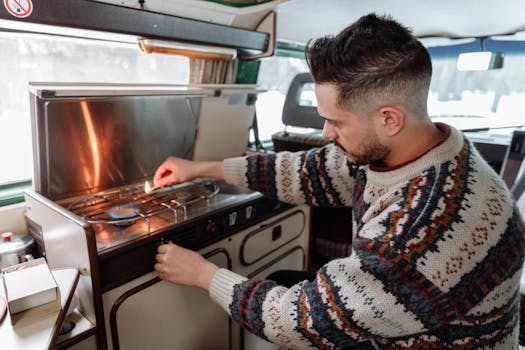Essential Public Transportation Etiquette While Traveling: Communication Tips for Millennial Adventurers and Digital Nomads
Traveling can be exciting, but understanding how to act on public transport is important. Public transportation etiquette helps you fit in and avoid misunderstandings. You learn why respecting local customs matters and how it can make your trips smoother. This guide gives you practical tips for traveling without hassle and connecting with others while on the move.
Mastering Public Transportation Etiquette in Diverse Cultures
Understanding local norms is key to seamless travel. Each country has its own rules and customs when it comes to public transportation. For example, in Japan, people often stand in designated lines while waiting for trains. In contrast, in many South American countries, getting on the bus can feel like a competitive sport (elbows out!).
To avoid awkward situations, do your homework before you go. Researching local customs can prepare you for what to expect. Use resources like travel blogs or cultural websites, and apps like Google Translate can help you learn basic phrases. This will make your travels smoother and show respect for the local culture.

Effective Communication Tips for Public Transportation
Breaking language barriers is essential for communicating with public transport staff in another language. If you find yourself in a country where English isn’t widely spoken, don’t panic! You can use translation apps, like Google Translate or Duolingo, to help you out. Learning a few key phrases in the local language can also go a long way. Simple greetings or “thank you” can create a friendly atmosphere, even if your pronunciation isn’t perfect (you might just get a chuckle!).
Consider the story of Alex, a digital nomad traveling through Vietnam. He didn’t speak Vietnamese but downloaded a translation app before his trip. When he needed help with the bus schedule, he used the app to ask for directions. The bus staff appreciated his effort and helped him find the right bus. This not only made his journey easier but also built a connection with the locals.
Financially Savvy Travel: Saving Money on Public Transport
Travel hacking can help you save money on public transportation. Many cities offer travel passes that allow unlimited rides for a set period. For instance, some cities in Europe have weekly or monthly passes that can save you a lot if you plan to use public transport frequently. These passes are often cheaper than buying single tickets.
Additionally, keep an eye out for loyalty programs for travelers. Some public transport systems reward frequent travelers with points or discounts. For example, in London, using an Oyster card can save you money compared to paying cash.
Consider the story of Sarah, who traveled across Europe. She used her credit card points to purchase an annual rail pass. This allowed her to travel extensively without spending a fortune on individual tickets. By planning ahead and using her points wisely, Sarah saved both time and money.

To organize your work and travel schedules effectively, consider using apps like Google Calendar or Trello. These tools can help you map out your travel times and work commitments, ensuring you stay productive without missing your bus or train.
For example, if you know you have a two-hour commute, you can set aside that time to catch up on work. This way, you can maximize your efficiency and enjoy more free time when you reach your destination.

Conclusion: Travel with Confidence and Courtesy
In summary, understanding public transportation etiquette is essential for a smooth travel experience. By respecting local customs, effectively communicating, and using financial strategies, you can enhance your adventures. Remember, the better you understand and navigate public transport systems, the more enjoyable your travels will be. So pack your bags, plan ahead, and get ready for your next adventure!
FAQs
Q: How can I politely ask for help or directions from public transportation staff if I don’t speak the local language fluently?
A: To politely ask for help or directions from public transportation staff when you don’t speak the local language fluently, you can start with a friendly smile and say, “Excuse me, I need help. Do you speak English?” If they do, you can ask your question clearly. If not, use simple phrases or gestures, and consider showing them a map or your destination on your phone.
Q: What are some cultural differences in public transportation etiquette that I should be aware of when traveling internationally?
A: When traveling internationally, it’s important to be aware that public transportation etiquette varies by culture. For example, in some countries, it is customary to give up your seat for the elderly or pregnant women, while in others, maintaining personal space is prioritized. Additionally, speaking quietly and refraining from eating or drinking may be expected in certain regions. Always observe local behaviors and follow the lead of the locals to ensure respectful interaction.
Q: How do I navigate situations where local commuters might find my behavior as a tourist inappropriate or annoying?
A: To navigate situations where local commuters might find your behavior as a tourist inappropriate or annoying, be observant and respectful of local customs and etiquette. Maintain a low profile, avoid excessive noise, and be considerate of personal space, ensuring that you blend in and minimize disruption to the daily routines of locals.
Q: What are some respectful ways to manage luggage and personal space on crowded public transportation systems abroad?
A: To manage luggage and personal space on crowded public transportation systems abroad, place your bags on your lap or between your feet to keep aisles clear and avoid encroaching on others’ space. Additionally, be mindful of peak hours and try to travel light, ensuring that your luggage does not exceed the space you can manage comfortably.
